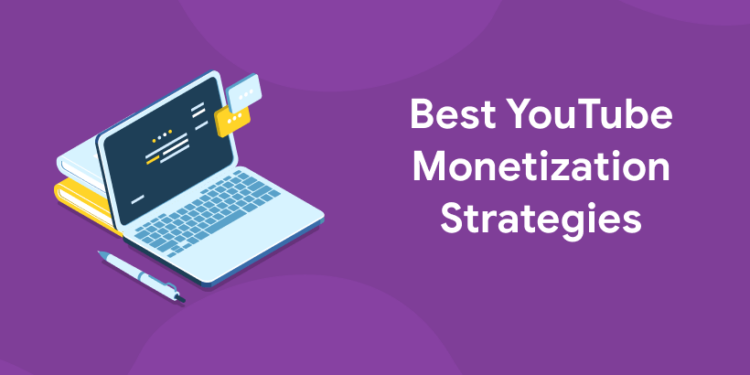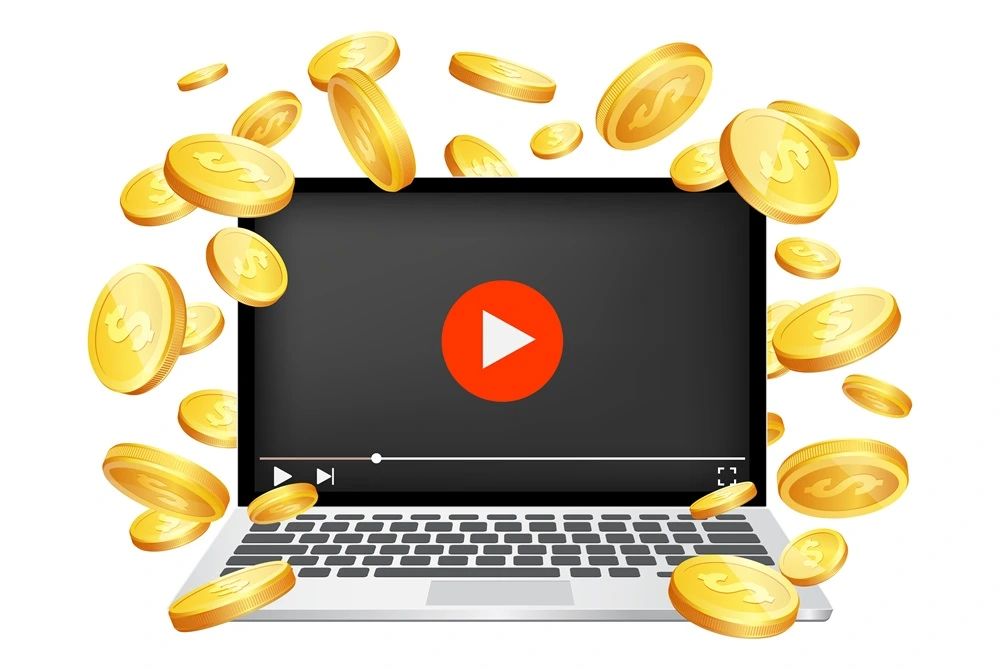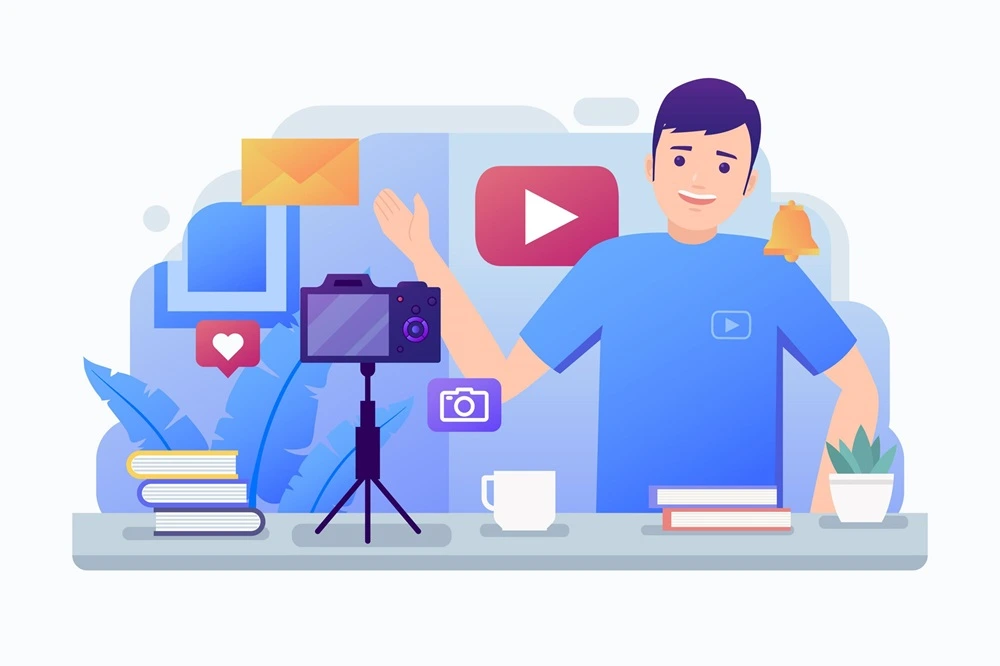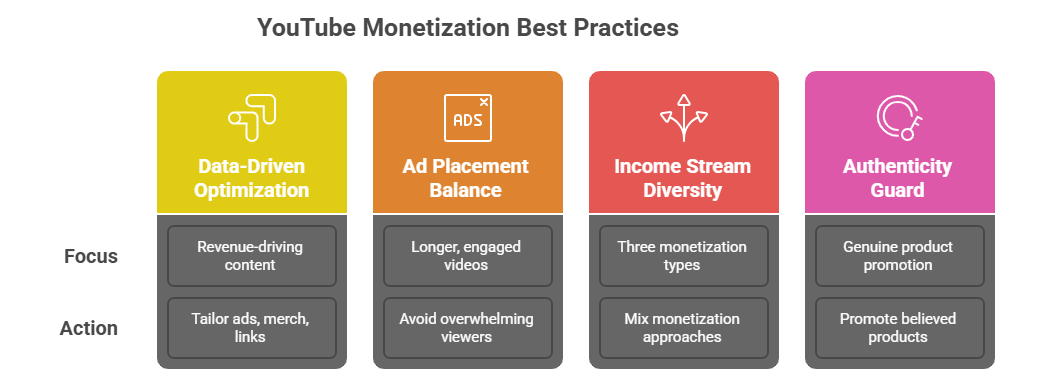Table of Contents
YouTube has evolved into one of the most powerful platforms for content creators and entrepreneurs worldwide. Monetizing your channel can turn your passion into a steady stream of income. With shifting policies and rising competition, understanding the best monetization strategies is vital to stand out in 2025.
Key YouTube Monetization Eligibility Updates
As of 2025, YouTube has lowered some of its monetization thresholds to support more creators in earning revenue. To join the YouTube Partner Program (YPP) and unlock most monetization features, you now need:
-
At least 1,000 subscribers
- 4,000 valid public watch hours in the last 12 months or 10 million Shorts views in the last 90 days
-
Minimum of 3 valid public video uploads in the last 90 days
-
An active AdSense account linked to your channel
-
Two-factor authentication is enabled on your Google account
Meeting these criteria will grant access to fan funding features like Super Chats, Channel Memberships, and Super Thanks.
YouTube Monetization Strategies
1: What is the primary goal of SEO (Search Engine Optimization)?
The truth is that only a small percentage of YouTube users will become wealthy; therefore, it’s critical to have realistic expectations. As a YouTuber, though, you have a variety of choices for monetizing your videos and making money from your work. Let’s look at how to generate money on YouTube by going over the most common monetization options.
1. Advertising via the YouTube Partner Program
When your channel is eligible to join the YouTube Partner Program, YouTube has specific standards. It is necessary to join this in order to be monetized (meaning that ads show on your videos). To be monetized on YouTube, a channel must have
-
1,000 subscribers and 4,000 public watch hours in the last 12 months, or
-
500 subscribers with 3,000 watch hours or 3 million Shorts views in 90 days.
Link a Google AdSense account for payments, enable two-factor authentication, and ensure compliance with YouTube’s Community Guidelines to avoid demonetization.
You won’t be able to make money from ads until you’ve established a YouTube fanbase. To see how far you’ve come, go to your YouTube Studio page and click on the Monetization tab on the left. You’ll be able to see if your channel meets the requirements and if not, where you went wrong.
Unfortunately there’s no way to calculate how much money you can make from YouTube ads. It depends on how many people watch the whole ad, how many people use an adblocker and other factors. Also YouTube has had issues with advertisers pulling their ads from the platform. This has resulted in the site demonetizing videos for various reasons and changing the monetization rules frequently resulting in inconsistent income. So ad revenue is not guaranteed when you’re just starting out. Many creators use other ways to make money on YouTube to deal with the monetization issues.
2. Crowdfunding to make money on YouTube
If you have a loyal following, ask your fans to crowdfund your channel. This will fund your new videos and profit. A crowdfunding platform like Patreon makes it easier to get paid for your content. Your fans can subscribe to their favorite channels for as little as a dollar and they’ll even get some exclusive goodies from their favorite YouTube creators.
Tipee is another service that allows you to make one time and recurring gifts. For profit and non profit channels alike are using fan funding with their audience. You’ll be surprised how your viewers open up their wallets if the type of content you publish is engaging, funny or valuable. When asking for donations also know your audience demographics.
3. Product Placements
Product placement is an old school advertising tactic that can be seen in TV shows and movies and can also be used to make money on YouTube. It’s basically promoting a company through a specific brand. A shot of someone playing a PlayStation on a Sony TV in a Sony Pictures movie for example.
You can work out a product placement deal with a company that’s relevant to the type of videos you make on your YouTube channel. Of course before a company will advertise with you, you’ll need to have a following so this isn’t something you can do when you’re just starting out.
Because consumers can’t avoid it, this is an effective advertising strategy. Furthermore, viewers frequently feel a bond with their favourite creators. This gives your recommendations greater credibility, but you must be careful not to overdo it.
Discover the power of performance marketing! Join Free Demo Course Here!
4. Sponsorships and Sponsored Videos
Product placement is similar to sponsored films, but there are a few important differences. A sponsored film is exclusively focused on that brand or product, as opposed to product placement, which entails inserting a brand into an existing video.
If you run a gaming channel, for example, a developer might approach you about making a video about their game. You’ll tell your viewers that the developer paid you to film the video because you probably wouldn’t have played it otherwise. A proper sponsorship agreement would allow you to express your honest feelings about the game, ensuring that any praise is genuine.
Sponsored videos, like product placement, are a good way to make money, but they should be used with caution. Your audience may find these videos or mentions offensive if you don’t come off as sincere. As a result, you should strive to avoid promoting anything you’ve never used or don’t fully believe in.
5. Master Your YouTube SEO.
For video artists who haven’t yet acquired a substantial audience, this year is the time to pick up your game and leverage YouTube SEO. To do so, conduct standard keyword research but consider what people are searching for on YouTube. Next, double-check that your video title, description, and tags all contain high-value keywords.
Once your channel is up and running, you can look at the “Traffic Source: YouTube search” report to see what people are looking for when they come to your hosted videos. In general, Google returns video results for phrases like “how to,” “reviews,” “tutorials,” and “funny video.”
There are also five important YouTube SEO ranking criteria to take into account:
- The number of comments received
- After seeing a video, they subscribe.
- Ratio of thumbs up to thumbs down
- The duration of the video
- The percentage of people who click on the YouTube search results.
Keep in mind that ranking on the first pages of Google for competitive keywords is only going to grow harder. YouTube receives more video uploads per minute than all other video libraries combined!
As a result, SEO is not a quick fix (but can be accelerated with these strategies).
6. Selling Merchandise
Another way to make money is to create items that you can sell to your fans. Spreadshop, for example, allows you to create bespoke designs for T-shirts, wall art, mugs, and other items. Many producers have designs available that include popular catchphrases, gags, or artwork from their videos.
Once you’ve made some fantastic designs, mention them at the beginning of a few videos. In addition to including a link to your shop in the video description, YouTube’s merch shelf function allows you to highlight select of your products directly beneath your videos for more visibility.
Physical things are a great method for your supporters to show their support while also getting some awesome goodies. You simply need a large enough following for people to be interested in purchasing your merchandise.
7. Consider Branching Out to Other Services
This final argument is a little different from the others, but it’s still worth thinking about. It’s not a bad idea to broaden your online business if you’ve reached a point where you’re having success and making money on YouTube. Spending some time on other platforms will provide you with even more money opportunities.
If your YouTube channel is known for scripted videos on topics like cooking advice or video games, for example, you might use Twitch to stream straight to your viewers and earn money through subscriptions. Try publishing snippets to capture people’s eyes as they scroll through videos on YouTube if you don’t already use services like Instagram to increase traffic to your channel.
Looking to drive tangible results? Explore the world of performance marketing!
Become an AI-powered Digital Marketing Expert
Master AI-Driven Digital Marketing: Learn Core Skills and Tools to Lead the Industry!
Explore CourseBest Practices for YouTube Monetizing
-
Data-driven optimization: Use analytics to see what content drives revenue vs. views—tailor your mix of ads, merch, and affiliate links.
-
Balance ad placement with user experience: Focus on longer, engaged videos—but avoid overwhelming viewers with too many mid-rolls.
-
Stay diverse with income streams: Successful creators mix at least three monetization types (ads, merch, sponsorships, courses).
-
Guard authenticity: Viewers tune into you, not just ads. Only promote products and tools you truly believe in.
Final Word
While you have a variety of YouTube monetization Strategies, keep in mind that making money on YouTube is not straightforward. To build the viewership required for commercials, sponsorships, and other opportunities, you’ll need to make high-quality videos for a long time.
Monetizing your YouTube channel is an exciting journey, especially with the lowered thresholds and expanded monetization features. Combining multiple revenue streams, producing consistent engaging content, leveraging Shorts, and actively engaging your community can turn your passion into profit.
Start building your channel today, use these monetization strategies, and watch your YouTube earnings grow sustainably over time.
Frequently Asked Questions
How do YouTubers earn money from their videos?
YouTubers earn through multiple streams like ad revenue (via AdSense), channel memberships, sponsored content, affiliate marketing, and merchandise sales. Once eligible for the YouTube Partner Program, they can start monetizing directly through ads.
What is the YouTube Partner Program (YPP)?
The YPP allows creators to monetize their content through ads, channel memberships, and Super Chats. To qualify, a channel must have at least 1,000 subscribers and 4,000 watch hours in the past 12 months.
Is it possible to earn money with a small YouTube channel?
Yes, even small channels can earn through affiliate links, brand sponsorships, and selling digital products. With high engagement and niche content, smaller creators often attract loyal audiences willing to support them.
What is the best monetization strategy for beginners?
Starting with ad revenue and affiliate marketing is ideal for beginners, as both are relatively easy to set up. As your audience grows, you can expand into merchandise, sponsorships, and memberships.
How much can a YouTuber earn from 1 million views?
Earnings from 1 million views can vary widely, typically between ₹50,000 to ₹300,000 in India depending on niche, audience, and ad engagement. The actual amount depends on factors like CPM (Cost Per Mille) and viewer location.
Can Shorts be monetized on YouTube?
Yes, YouTube Shorts are monetized through ad revenue sharing for creators in the Partner Program. YouTube distributes a percentage of ad revenue generated from Shorts to eligible creators.
Are sponsorships better than YouTube Ads?
Sponsorships often offer higher payouts than standard ads and allow for direct partnerships with brands. However, ad revenue provides a consistent income stream as your views grow.
How do affiliate links work on YouTube?
Affiliate links let creators earn commissions by promoting products in video descriptions or during the content. When viewers click the link and make a purchase, the creator earns a percentage of the sale.
What are Super Chats and Super Thanks?
Super Chats and Super Thanks are features that allow fans to donate money during live streams or on-demand videos. These tools help creators earn directly from their most engaged audience members.














